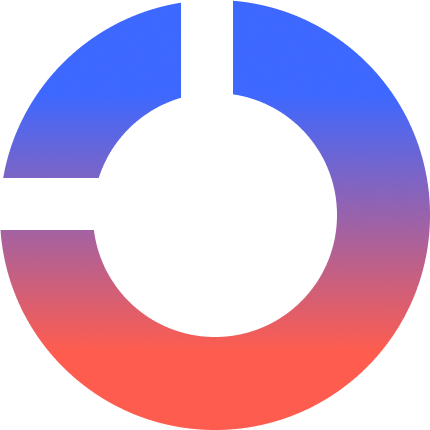In our Author Spotlight series, we chat with members of our community about their career paths in data science and AI, their writing, and their sources of inspiration. Today, we’re thrilled to share our conversation with Mauro Di Pietro.
Mauro is a data scientist and content creator with a decade of experience in the banking industry across Europe and Asia. He studied quantitative finance but taught himself programming after graduation, which sparked his passion for writing tutorials that break down complex topics into simple and engaging explanations.
You’ve written an impressive series on building AI agents from scratch using Python and Ollama. What motivated you to avoid tools like OpenAI APIs or paid cloud services?
I like to make my own stuff, and I’m a huge fan of “open-source.”
I come from the early era of Machine Learning, when data scientists used to train their own models. I’m quite nostalgic about those days, when “all you need” wasn’t Attention, but a small dataset, Scikit-learn, and limited computing power were enough to perform a nice classification. I especially miss the data exploration part, as I was quite good at plotting. Today, we are all using ChatGPT, and I literally haven’t trained a model in years…so I prefer to build from scratch wherever I can.
Besides, I work in banking and I’m used to handling highly sensitive data. Leveraging open-source tools to build from scratch is a better choice, rather than relying on paid cloud services, when you want to invest in control and customization. You have full ownership over your infrastructure, avoid vendor lock-in, and maintain tighter control over data privacy and security. And more importantly, it’s free. Therefore, as long as I can choose, I will always pick the “open-source/from-scratch” approach.
About the “from scratch” approach: what’s your philosophy behind starting from zero, and how do you balance educational clarity with real-world complexity?
I believe that you really learn only when you try to do things yourself. Growth rarely comes from getting things right the first time.
In real use cases, it never goes as planned, so one should know the gap between theory and practice. To compromise between the two, it’s essential to treat theory as a flexible foundation rather than a rigid framework. Theory provides models that work in ideal conditions, but real-world scenarios come with noise, uncertainty, and constraints (like budget, time, and human behavior). Ultimately, it’s in the gray area between theory and practice that smart ideas can generate real value. So, in order to handle real-world complexity, first you need to master educational examples.
But it’s not just AI: that applies to everything… Life is a process of trial and error. We evolve through experience: trying, failing, adjusting, and trying again. That’s human (and machine) learning.
You’ve explored single-agent, multi-agent, and chain-based architectures. How has your perspective on agent design evolved as you’ve progressed through these models?
At the moment, Single Agents are the way to go and the closest to being ready for production. In particular, Single Agents are better than multi-agent systems when the use-case domain is well defined and can be effectively managed by a single point of control. They are simpler to design, test, and maintain.
On the other hand, Multi-agent systems introduce added complexity in the decision-making process, which can be unnecessary or even counterproductive.
The more Agents you add in a system, the harder it is to control, and the quality of the output gets affected. Let’s keep in mind that any result from a Machine Learning model must always be validated.
So, unless the task doesn’t benefit from distributed intelligence, I’d recommend trying Single Agents first.
How do you stay up-to-date and inspired when working with tools and approaches that are often on the frontier of both AI research and development?
Oh, that’s the hardest part, as I’m a very lazy person. What drives me to stay up to date with the industry is a mix of curiosity, passion and FOMO… I don’t want to be left behind!
Like any other writer, I read a lot, especially to spot new upcoming trends. Moreover, I interact all the time with the community to understand how other people are approaching similar problems. For example, a lot of my readers contact me on LinkedIn asking for help to run the code from my articles. I always try to understand their use cases, discuss together what would be the best possible approach, and sometimes new ideas come up.
Innovation often comes from cross-disciplinary exposure through feedback from peers and users. So, I’d say the best way to stay inspired is talking to people.
Then, once you get that inspiration flowing like gasoline, to actually stay “up to date”, you need to grind with hands-on experiments (i.e., reproducing articles, contributing to open-source projects, building prototypes).
Looking ahead, what kinds of problems or systems are you most excited to build, or see others build, using AI agents?
I see Agents as “baby AI”. With modern NLP and Computer Vision, we are very close to having all the ingredients for the first general-purpose AI software.
When I was a kid, in the 90s, every household got a computer in the house that all family members had to share. Well, I believe that it’s about to happen again. Soon, each family will have a personal AI assistant connected to all the devices (phones, house, car…). Eventually, Robotics will catch up on the hardware side, and that family AI assistant will become the personal robot we have always dreamed about.
Personally, I’m very excited for AI to replace humans in small daily tasks. I can’t wait to see my personal robot sending emails, booking appointments, and organizing my agenda for the day, while I enjoy breakfast (that I will still cook myself because the “from scratch” approach never dies!).
To learn more about Mauro‘s work and stay up-to-date with his latest articles, follow him here on TDS and on LinkedIn.
